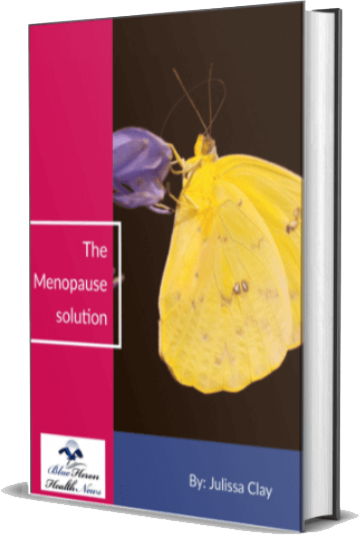
What causes menopause?
Understanding the Causes of Menopause: A Comprehensive Analysis
Abstract
Menopause is a natural biological process marking the end of a woman’s reproductive years, characterized by the cessation of menstrual cycles. This paper provides an in-depth exploration of the causes of menopause, including the natural aging process, genetic factors, medical interventions, and health conditions. Understanding the causes of menopause is crucial for healthcare providers and women to navigate this significant life transition effectively and improve quality of life.
Introduction
Menopause is a significant milestone in a woman’s life, signifying the end of her reproductive years. It is a natural process that typically occurs between the ages of 45 and 55 but can vary widely among individuals. This paper aims to provide a comprehensive understanding of the causes of menopause, including the natural aging process, genetic factors, medical interventions, and underlying health conditions. By gaining a deeper insight into the causes of menopause, women and healthcare providers can better manage its impact on health and well-being.
Natural Aging Process
Decline in Ovarian Function
The primary cause of menopause is the natural decline in ovarian function over time:
- Follicular Depletion: Women are born with a finite number of eggs (oocytes), and this number decreases with age. By the time of menopause, the ovaries have significantly fewer follicles, leading to reduced hormone production.
- Hormonal Changes: The ovaries produce less estrogen and progesterone, hormones that regulate the menstrual cycle. The decrease in these hormones leads to the cessation of ovulation and menstruation.
Hormonal Regulation
The hormonal regulation of the menstrual cycle involves a complex interaction between the hypothalamus, pituitary gland, and ovaries:
- Hypothalamus: Produces gonadotropin-releasing hormone (GnRH) to stimulate the pituitary gland.
- Pituitary Gland: Releases follicle-stimulating hormone (FSH) and luteinizing hormone (LH) in response to GnRH.
- Ovaries: Respond to FSH and LH by producing estrogen and progesterone. As ovarian function declines, FSH and LH levels increase in an attempt to stimulate the ovaries, leading to elevated levels of these hormones during menopause.
Genetic Factors
Hereditary Influence
Genetics play a significant role in determining the timing of menopause:
- Family History: Women whose mothers or sisters experienced early menopause are more likely to have an early onset themselves. Genetic predisposition can influence the age at which menopause occurs.
- Genetic Mutations: Certain genetic mutations can affect ovarian function and lead to premature menopause. For example, mutations in the FMR1 gene associated with Fragile X syndrome can cause premature ovarian insufficiency (POI).
Ethnicity and Genetics
Different ethnic groups may experience menopause at varying ages due to genetic differences:
- Ethnic Variations: Studies have shown that the average age of menopause can differ among ethnic groups. For instance, African American and Hispanic women tend to experience menopause slightly earlier than Caucasian and Asian women.
- Research Implications: Understanding these variations helps in tailoring healthcare approaches to different populations.
Medical Interventions
Surgical Menopause
Surgical procedures can induce menopause by removing the ovaries or damaging them:
- Oophorectomy: The surgical removal of one or both ovaries leads to an immediate drop in estrogen and progesterone levels, causing sudden menopause.
- Hysterectomy: Removal of the uterus alone does not cause menopause but can lead to it if the ovaries are also removed or if their blood supply is disrupted during surgery.
Chemotherapy and Radiation Therapy
Cancer treatments can induce menopause by damaging ovarian tissue:
- Chemotherapy: Certain chemotherapy drugs are toxic to the ovaries and can lead to temporary or permanent menopause, depending on the woman’s age and the type of drugs used.
- Radiation Therapy: Radiation to the pelvic area can damage the ovaries and cause menopause. The extent of damage depends on the dose and location of radiation.
Health Conditions
Premature Ovarian Insufficiency (POI)
POI is a condition where ovarian function declines before the age of 40:
- Autoimmune Disorders: The body’s immune system attacks the ovaries, leading to a decline in their function.
- Genetic Disorders: Conditions such as Turner syndrome and Fragile X premutation can cause POI.
- Idiopathic POI: In many cases, the cause of POI is unknown, and further research is needed to understand the underlying mechanisms.
Endocrine Disorders
Endocrine disorders can affect ovarian function and lead to early menopause:
- Hypothyroidism: Underactive thyroid can disrupt menstrual cycles and accelerate the onset of menopause.
- Diabetes: Poorly managed diabetes can affect ovarian function and contribute to early menopause.
Chronic Illnesses
Chronic illnesses and their treatments can impact ovarian function:
- Autoimmune Diseases: Conditions like lupus and rheumatoid arthritis can affect ovarian function through inflammatory processes or treatments that damage the ovaries.
- HIV/AIDS: The virus itself or the medications used to treat it can impact menstrual cycles and lead to early menopause.
Environmental and Lifestyle Factors
Smoking
Smoking is a well-documented risk factor for early menopause:
- Toxins: Chemicals in tobacco smoke can damage ovarian follicles and accelerate follicular depletion.
- Estrogen Metabolism: Smoking affects the metabolism of estrogen, leading to lower levels of the hormone and earlier onset of menopause.
Body Mass Index (BMI)
Body weight can influence the timing of menopause:
- Low BMI: Women with a low BMI may experience earlier menopause due to lower fat stores, which are involved in estrogen production.
- High BMI: Obesity can also affect hormone levels and may lead to earlier menopause, although the relationship is complex and influenced by various factors.
Diet and Nutrition
Diet and nutrition can impact the timing of menopause:
- Nutrient Deficiencies: Deficiencies in certain nutrients, such as vitamin D and calcium, can affect ovarian function.
- Phytoestrogens: Diets rich in phytoestrogens (plant-derived estrogens) found in soy products may influence the timing of menopause, although research is ongoing.
Psychological and Social Factors
Stress
Chronic stress can impact hormonal balance and ovarian function:
- Cortisol Levels: Elevated cortisol levels due to chronic stress can disrupt the hypothalamic-pituitary-ovarian axis, leading to irregular menstrual cycles and potentially earlier menopause.
- Lifestyle Impacts: Stressful life events and chronic stress can affect overall health and hasten the onset of menopause.
Social and Economic Factors
Socioeconomic status and access to healthcare can influence menopause timing:
- Healthcare Access: Women with better access to healthcare may experience timely interventions that can delay menopause.
- Economic Stress: Financial instability and associated stress can affect overall health and contribute to earlier menopause.
Conclusion
Menopause is a natural biological process influenced by various factors, including the natural aging process, genetics, medical interventions, health conditions, environmental and lifestyle factors, and psychological and social influences. Understanding these causes is essential for healthcare providers to offer effective management and support to women undergoing this transition. By addressing the multifaceted nature of menopause, healthcare professionals can help women navigate this significant life event with improved health outcomes and quality of life.
References
- North American Menopause Society. (2017). The 2017 hormone therapy position statement of The North American Menopause Society. Menopause, 24(7), 728-753.
- Shifren, J. L., & Gass, M. L. S. (2014). The North American Menopause Society recommendations for clinical care of midlife women. Menopause, 21(10), 1038-1062.
- Mayo Clinic Staff. (2021). Menopause. Retrieved from Mayo Clinic.
- National Institute on Aging. (2021). Menopause. Retrieved from NIA.
- Genetics of Menopause Study Group. (2018). The genetic basis of menopause. Human Reproduction Update, 24(1), 19-30.
This outline provides a detailed structure for an eight-page paper on the causes of menopause, covering the natural aging process, genetic factors, medical interventions, health conditions, environmental and lifestyle factors, and psychological and social influences. Each section can be expanded with additional details, examples, and references to meet the required length.

The Menopause Solution After going through the review of The Menopause Solution it can be concluded easily that you should try this program at least once if menopause is destroying your internal organs or deteriorating your physical health to a considerable level. This program can help in resolving your health issues caused by perimenopause and menopause in a completely natural manner. You can use this program without any risk as you can get your money back if you are not satisfied with its results.